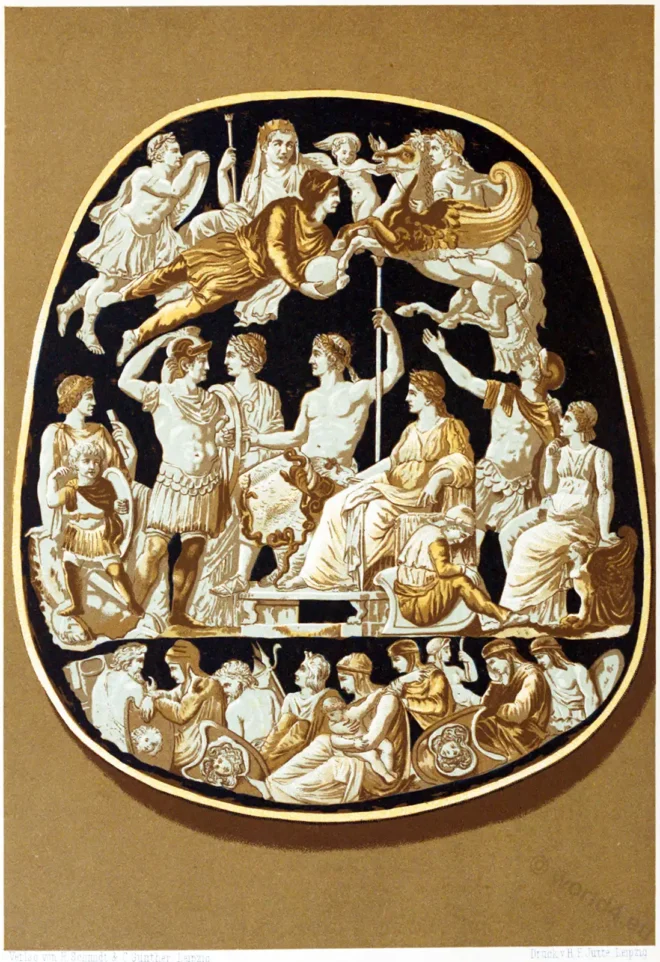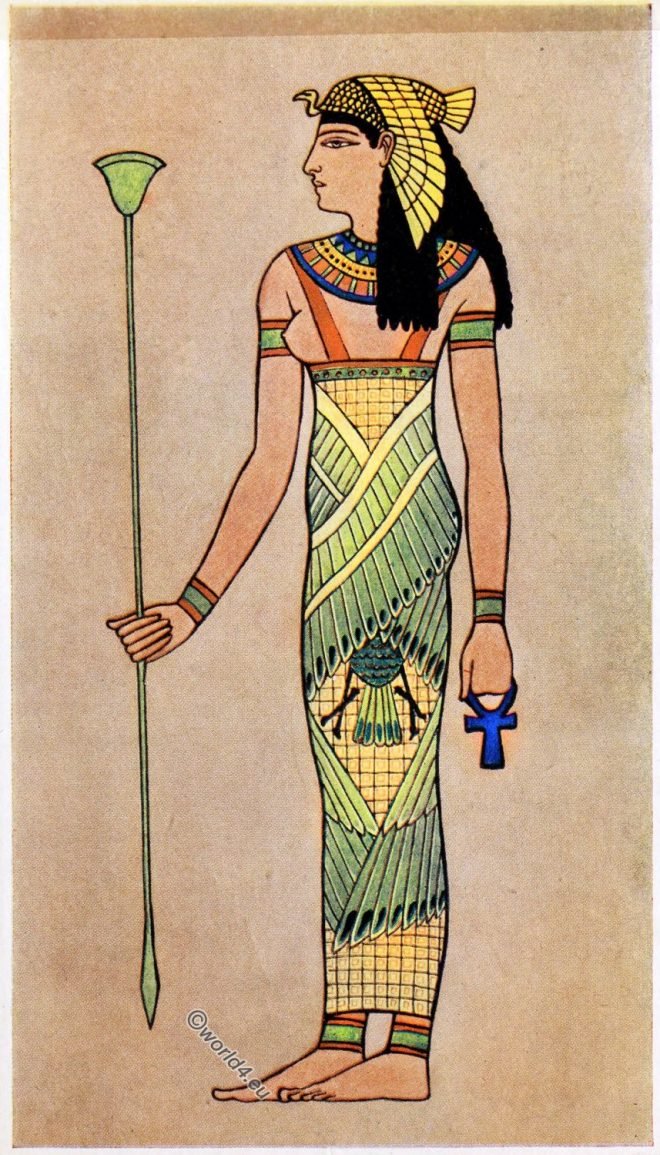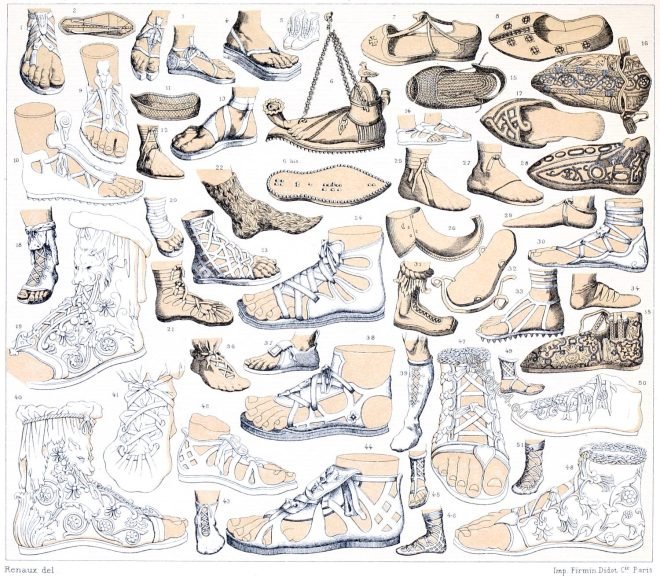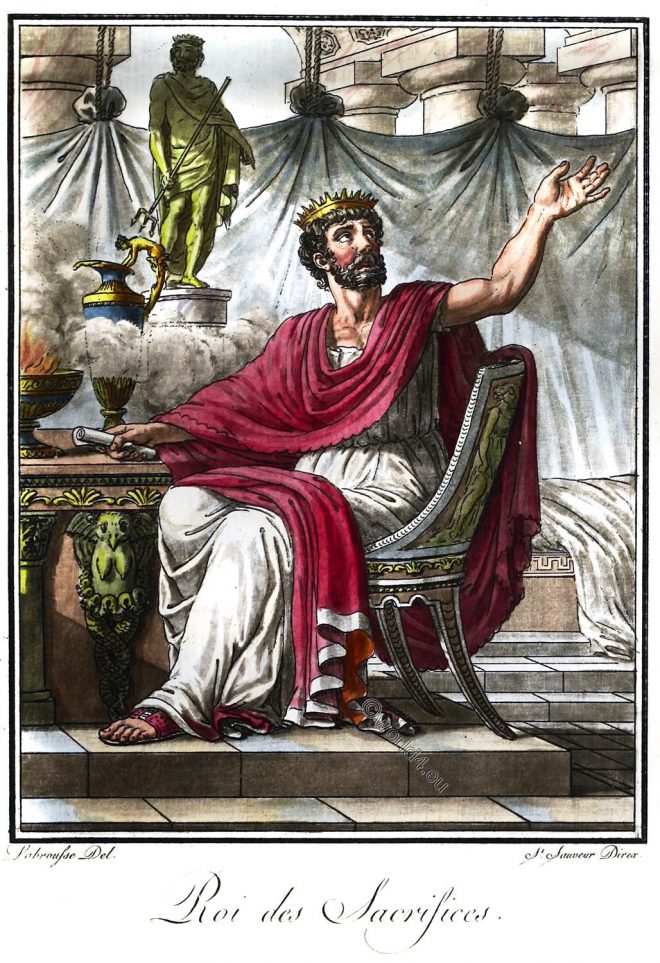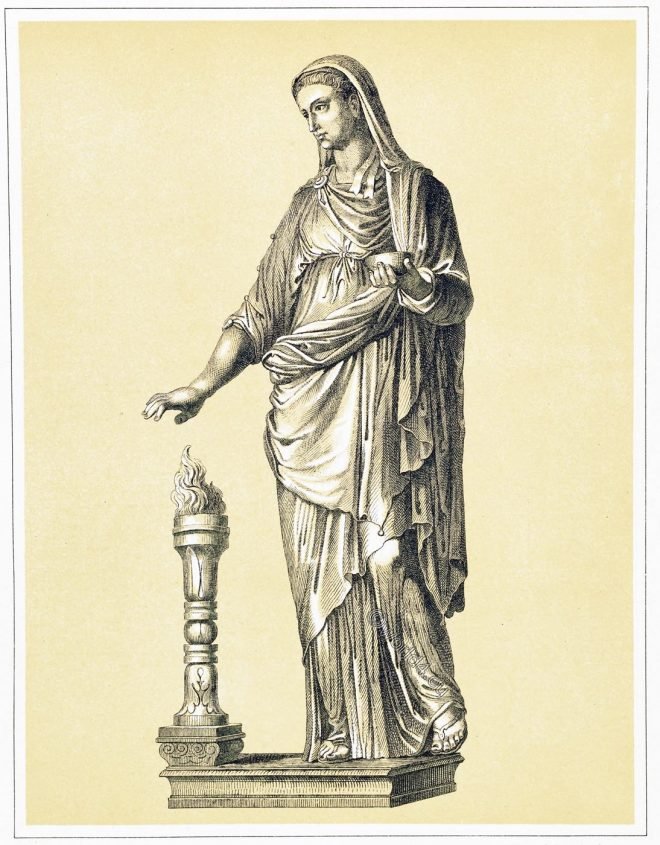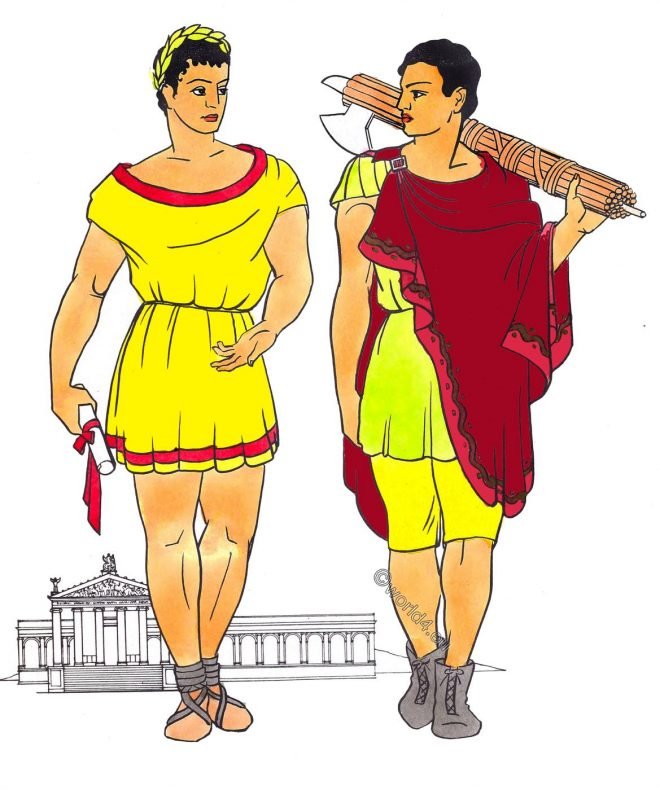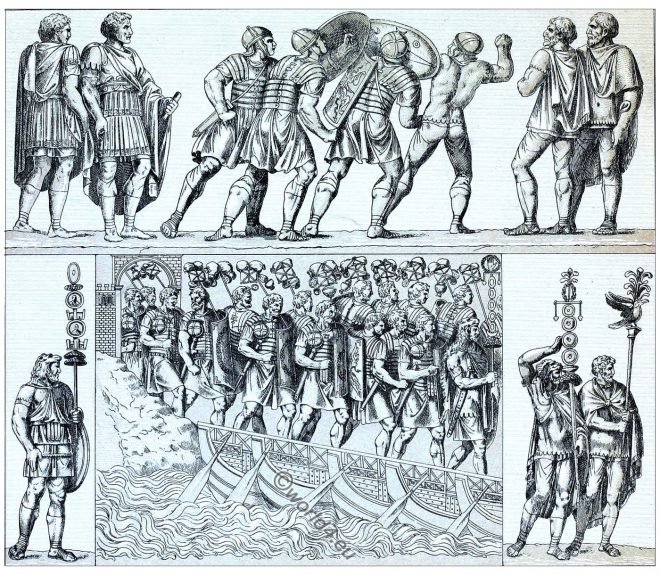Apotheosis was the name for a ceremony performed by the Romans to admit emperors, empresses or other mortals to the ranks of the gods or heroes.
Tag: Ancient Roman Costumes
The Corset and the Crinoline. Chapter II.
Chapter II. Roman, Greece and Egypt. The Corset and the Crinoline.
Shoes of antiquity. Sandals, closed footwear of the ancient world.
Classical Antiquity. Footwear. Fashions and Customs. Calceus, Ocrea, Caliga, Campagus, Crepida, Solea, Pero, Ceremonial shoes, Runner’s boots, Lace-up shoe.
The Roman legionary. Reconstructed after reliefs of the Trajan’s Column.
Roman legionary. Reconstructed after reliefs of the Trajan’s Column.
The Rex Sacrorum also known as Rex Sacrificulus.
The Rex Sacrorum (“king of sacrifices”), also known as Rex Sacrificulus was one of the highest Roman priests.
Religious sacrificial ceremonies of Romans in ancient times.
Various depictions and descriptions of bloody and bloodless sacrificial ceremonies of the ancient Romans. The cultrarius, the camillus, the spondaules, the victim butchers, victimarii, the popa.
The clothing of the vestal virgins. The cult of Vesta in ancient Rome.
The clothing of the vestal virgins consisted of infula, vittae, suffibulum which was held together under the chin by a fibula
The toga of a Roman senator. The armor of a Roman general.
Costume of the Roman Empire 31 B.C.- 476 A.D. The figure symbolizes the two characteristics that made Rome great statesmanship and military power
The usual Roman garment during the Republican Rome.
Rome during the height of its culture. Roman Republic. 500 B.C. – 30 B.C. The toga. The tunica. The abolla.
The Roman army. The legionary soldier. Equipment, assault weapons.
The Roman army. The legionary soldier. The complete equipment of the legionaries. The assault weapons. Military of the Ancient World.

